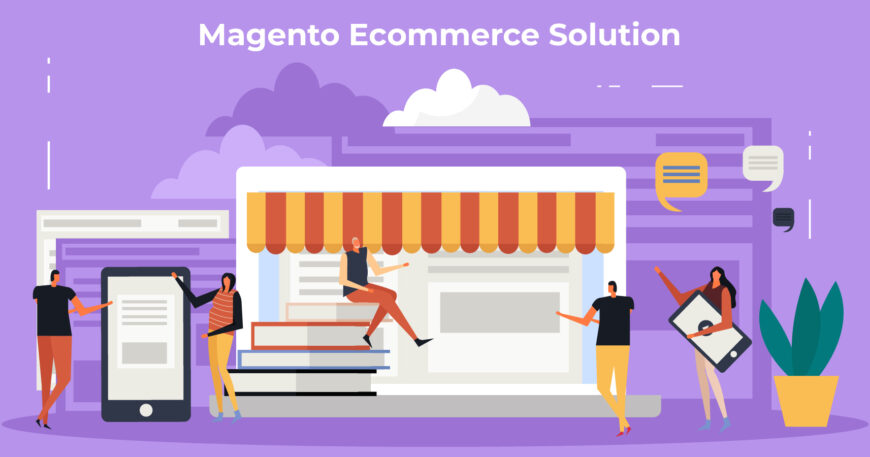Magento ecommerce solution is widely recognized as a leading e-commerce platform that has gained immense popularity among businesses worldwide. With its robust features and extensive customization options, Magento ecommerce solution has become the go-to choice for entrepreneurs looking to establish and manage successful online stores.
Currently, there are approximately 250,000 websites globally that rely on Magento to power their e-commerce operations. This staggering number demonstrates the trust and confidence businesses place in Magento to deliver exceptional online shopping experiences to their customers. As we delve deeper into Magento’s capabilities, let’s explore why this platform has become a dominant force in the e-commerce industry.
Magento Features and Functionality
Magento ecommerce solution stands out as an open-source technology, offering businesses unparalleled control over their online stores. This means that users have the freedom to shape their store’s look, functionality, and content according to their unique requirements and branding.
Whether it’s designing an eye-catching storefront, implementing specific features, or curating engaging content, Magento ecommerce solution empowers businesses with the tools they need to create a compelling online presence.
Tools and Features
Magento ecommerce solution provides a comprehensive suite of tools and features to optimize the performance and success of e-commerce ventures. With built-in marketing capabilities, businesses can promote their products effectively, reach a wider audience, and drive more conversions. Search Engine Optimization (SEO) features enable businesses to improve their website’s visibility in search engine rankings, attracting organic traffic and boosting online visibility.
Catalog Management
Catalog management is another crucial aspect of Magento’s functionality. It allows businesses to effortlessly organize and present their product catalogs, ensuring a seamless shopping experience for customers. From categorizing products to managing inventory, Magento ecommerce solution equips businesses with the necessary tools to streamline their operations and maintain accurate product information.
Introducing Magento 2
Magento 2 represents a significant advancement over its predecessor, Magento. This upgraded version has been rebuilt and enhanced to address concerns and feedback received from users. With its improved features and capabilities, Magento 2 offers a host of advantages that make it a compelling choice for businesses.
1. Flexible Architecture
One of the key advantages of Magento 2 is its flexible architecture. The platform provides a robust and scalable framework that can adapt to the evolving needs of businesses, allowing them to customize their online stores to align with their specific requirements. This flexibility empowers businesses to create unique and tailored e-commerce experiences that resonate with their target audience.
2. Faster Loading Speed
Another notable advantage of Magento 2 is its faster loading speed. With performance optimization at its core, Magento 2 is designed to deliver swift and seamless user experiences. The improved loading speed helps reduce bounce rates, enhance customer satisfaction, and ultimately drive higher conversions.
3. Easier Maintenance and Upgrade
Furthermore, Magento 2 introduces easier maintenance and upgrade options for businesses. The platform streamlines the process of maintaining and managing an online store, making it more user-friendly and efficient. Upgrading from Magento to Magento 2 is also simpler, ensuring a smoother transition for businesses looking to take advantage of the latest features and enhancements offered by the updated version.
Cost Considerations
When considering Magento as an e-commerce platform, it’s essential to understand the cost implications. Magento ecommerce solution offers two major variants: Magento Open Source (Community Edition) and Magento Commerce (Enterprise Edition), each with its pricing structure.
Magento Open Source
Magento Open Source is a free option, allowing businesses to leverage the core features and functionalities of the platform without any direct licensing costs. However, it’s important to note that there are associated costs involved in using Magento Open Source. These costs include domain hosting, design, and development expenses.
Businesses should budget for these additional expenditures, as they are necessary to set up and launch an online store using Magento Open Source. These costs can vary depending on the complexity and scale of the business’s requirements but typically amount to a minimum of around six thousand dollars per month.
Magento Commerce
On the other hand, Magento Commerce, the enterprise edition, comes with a higher price tag. The pricing plans for Magento Commerce start at approximately twenty-two thousand dollars. While some services such as hosting and other operational fees are covered within the Magento Commerce subscription, it still incurs additional costs.
When factoring in other necessary services, the total cost for Magento Commerce can range between 30 to 50 thousand dollars. This higher cost reflects the advanced features, support, and scalability that Magento Commerce offers to meet the demanding needs of larger businesses.
Support and Payment Gateways
When utilizing Magento as an e-commerce platform, it’s important to consider the availability of customer support and the payment gateway options offered. Firstly, it’s important to note that customer support for Magento is primarily available for Magento Commerce, the enterprise edition.
Unfortunately, Magento Open Source (Community Edition) does not come with dedicated customer support. This means that businesses using Magento Open Source will have to rely on community forums, online resources, and their expertise to troubleshoot and address any platform-related issues.
In terms of payment gateways, Magento ecommerce solution provides default options for credit card payments and PayPal integration. These options enable businesses to accept payments from customers using popular payment methods.
However, Magento ecommerce solution also supports a wide range of additional payment gateways to cater to specific business needs. Popular payment gateways like Braintree, Stripe, and others can be seamlessly integrated into Magento, allowing businesses to offer a diverse range of payment options to their customers. This flexibility in payment gateway integration ensures that businesses can choose the most suitable options that align with their target market and customer preferences.
Drawbacks of Magento
While the Magento ecommerce solution offers numerous advantages as an ecommerce platform, it’s important to consider some of the drawbacks associated with its utilization.
Complexity
One notable drawback of the Magento ecommerce solution is the complexity of its system structure. Due to its extensive features and customization options, Magento’s system can be quite intricate.
Building an online store on Magento requires a strong and professional team of developers and testers who possess in-depth knowledge of the platform. The complexity of Magento’s system structure may present challenges for businesses that lack the necessary technical expertise or resources to handle the intricacies of the platform.
Higher Development Costs
Another drawback to consider is the higher development costs associated with Magento. Developing a Magento ecommerce solution website typically requires a significant investment of time and expertise. The development process may involve intricate customization, integration with third-party systems, and the implementation of complex functionalities.
As a result, the cost of developing a Magento ecommerce solution site is often higher compared to other e-commerce platforms. Businesses should carefully assess their budget and resources to ensure they can afford the development costs associated with Magento.
Longer Customization Time
Furthermore, Magento may have a longer customization time compared to other e-commerce platforms. The level of customization and fine-tuning required to create a unique and fully functional online store on Magento often takes more time compared to simpler platforms.
The process of customizing themes, implementing specific features, and optimizing the user experience can be more time-consuming. Businesses should consider their timeline and urgency in launching their online store when weighing the customization time associated with Magento ecommerce solution.
Conclusion
Overall, we encourage readers to make an informed decision regarding Magento for their e-commerce business. By considering the key points covered in this blog, businesses can evaluate whether Magento aligns with their specific needs, resources, and goals.
We at Vserve offer expertise for all your Adobe Magento ecommerce solution needs, including development, modifications, migration, and managed services. Your demands will be met quickly by our Magento ecommerce solution developers, who will also come up with workable solutions.
This blog is inspired by the video: “Overview of Magento – The Most Popular and Complete eCommerce Platform for Your Business in 2023” by “Ecomclips.”





